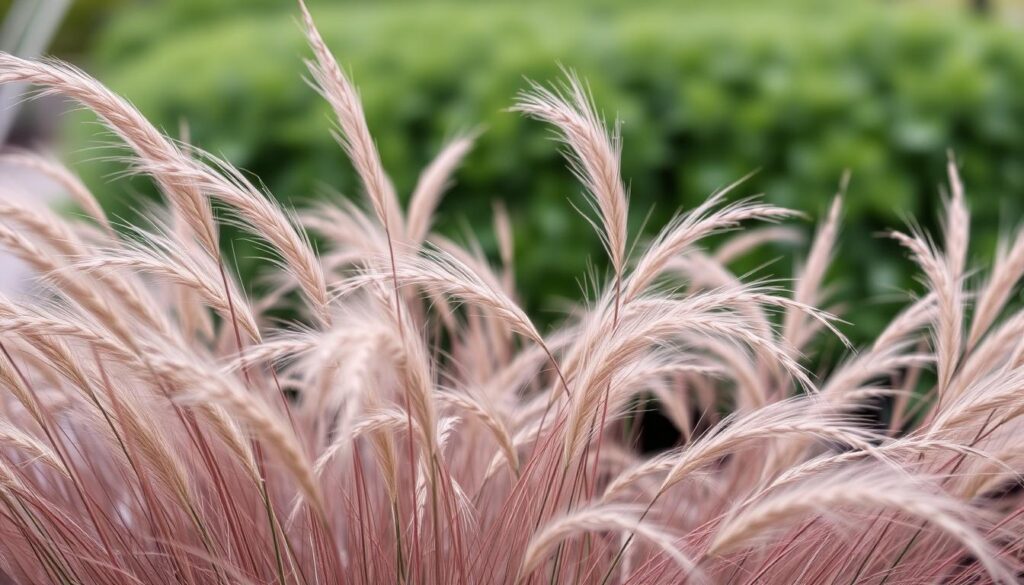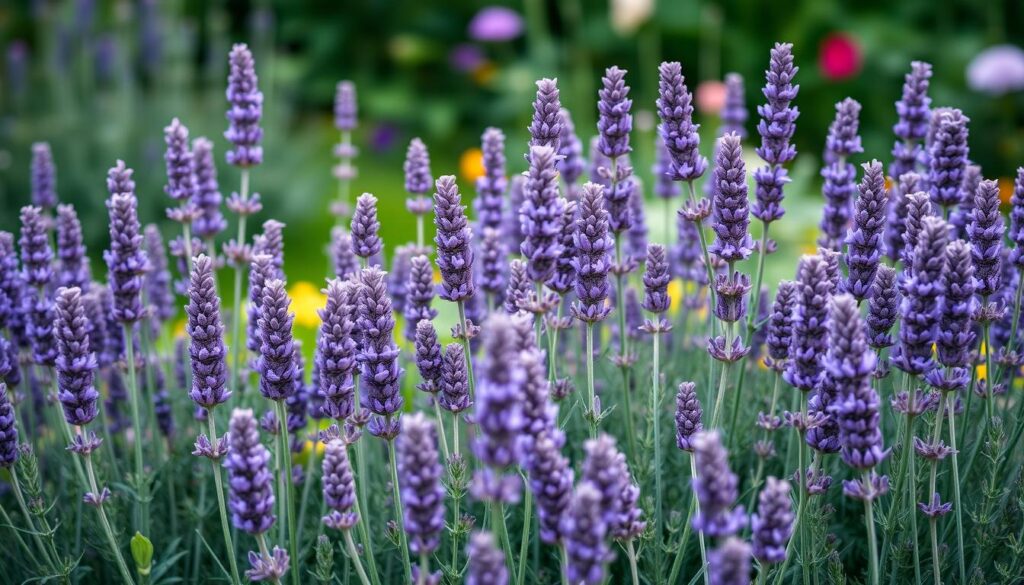Small Border Plants for Landscaping: Adding Beauty and Functionality to Your Garden
Picture a garden that wows with bright colors, interesting textures, and a perfect mix of beauty and use. You can make this dream a reality with small border plants. These plants are small but powerful, turning simple garden edges into stunning spots. They make your garden look better and work harder.
So, why are these small plants so charming? How do they make your garden more beautiful and useful? Let’s explore the world of small border plants. We’ll find out how to make your garden enchanting and fun.
Key Takeaways
- Small border plants offer a harmonious blend of beauty and functionality for your garden
- These low-growing plants come in a variety of vibrant colors, textures, and growth habits to suit different garden conditions
- Discover the practical benefits of using small border plants, such as low maintenance, drought-tolerance, and versatility in garden designs
- Explore a diverse selection of small border plants, including Sedum, Thymus, Geranium, and more, to elevate the aesthetic appeal of your outdoor space
- Learn how small border plants can create visual interest, texture, and movement in your garden, complementing larger plants and features
Introducing Small Border Plants: Enhancing Your Garden’s Beauty and Functionality
Low-growing plants are perfect for making your garden borders look great and work well. These plants grow close to the ground and have many benefits. They make your garden look better and work better too.
Exploring the Benefits of Low-Growing Plants for Border Designs
Plants like ground cover, dwarf shrubs, and perennial edging are easy to care for. They don’t need much pruning. These plants keep weeds away, letting your garden’s main features stand out.
They also make sure you can see everything clearly. This draws your eye to the big, eye-catching parts of your garden.
Versatility, Adaptability, and Ease of Maintenance
Low-growing border plants come in many textures, colors, and patterns. They can be flowers or evergreen leaves. This means you can change up your garden’s look all the time.
These plants are also very flexible. They grow well in different soils and weather. They help keep the soil in place, stop erosion, and keep moisture in. This makes them great for any garden size or climate.
“Incorporating low-growing border plants into your garden design is a brilliant way to enhance both the beauty and functionality of your outdoor space.”
Top Picks for Vibrant and Textured Border Plants
Creating a beautiful and useful garden border is easy with many options. But, some plants stand out for their unique qualities. Sedum and creeping thyme are two top choices that can make your garden look great.
Sedum (Stonecrop): Succulent Foliage with Star-Shaped Blooms
Sedum, also known as Stonecrop, is a great choice for gardens. It’s tough and can handle dry conditions. These plants come in many colors, shapes, and sizes, from low-growing mats to tall plants.
Their star-shaped flowers come in yellow, pink, and red. They add a bright touch to your garden. Sedum border plants are great for dry gardens and rock gardens. They look good all year, even in fall and winter.
Thymus serpyllum (Creeping Thyme): Fragrant Carpet of Purple Flowers
Thymus serpyllum, or Creeping Thyme, is another great option for borders. It grows low and spreads out, forming a fragrant purple flower carpet. Bees and other pollinators love it.
It’s tough and can handle a lot of foot traffic. That makes it perfect for paths and between stones. Its ability to survive dry conditions and versatility make it a top choice for creeping thyme border plants.
Geranium sanguineum: Adding Pops of Bright Magenta
If you’re looking for a border plant that pops with color, Geranium sanguineum, or Bloody Cranesbill, is perfect. It’s a hardy perennial with bright magenta flowers that bloom from late spring to early summer. These flowers create a stunning display that will catch the eye and delight everyone.
This plant is not just pretty; it’s also practical. Its foliage turns a rich red in the fall, adding interest all year. Plus, it’s deer-resistant, making it great for gardens with deer issues.
Geranium sanguineum is great for ground cover too. It spreads quickly and fills gaps, creating a vibrant carpet along borders. It’s easy to care for, making it a reliable choice for any garden.
“The bright magenta flowers of Geranium sanguineum are a true delight, adding a burst of color that instantly livens up any garden border.”
Looking to make your garden stand out or need a deer-resistant plant? Geranium sanguineum is a top pick. It’s versatile, tough, and adds a splash of magenta magic to any garden.
Ornamental Grasses for Movement and Texture
Make your garden borders more beautiful and useful with ornamental grasses. These plants bring movement and texture that change your landscape. The Hakonechloa macra, or Japanese Forest Grass, is a great choice.
Hakonechloa macra: Cascading Arches of Green
The Hakonechloa macra, or Japanese Forest Grass, is elegant and loves shade. Its leaves arch and cascade, moving in the wind. This grass is great for softening garden edges and adding flow to shady spots.

This grass is perfect for adding movement and texture to your garden. It does well in partial shade, making it a smart choice for your garden. Use this grass to make your outdoor areas look better.
“The Hakonechloa macra’s cascading arches of green foliage add a touch of elegance and movement that truly sets your garden apart.”
Small Border Plants for Landscaping: Floral Accents and Fragrance
Creating beautiful garden borders is easy with small, fragrant plants. Dianthus (Pinks) and nepeta (Catmint) are great choices. They bring visual interest and lovely scents to your garden.
Dianthus (Pinks): Sweet-Scented Blooms in Shades of Pink and Red
Dianthus, or Pinks, have fragrant flowers in pink and red. They have slender stems and blue-green leaves. These plants bloom in late spring or early summer, filling the air with sweet smells.
Their flowers last a long time and attract butterflies. They’re perfect for cottage gardens and places that help pollinators.
Nepeta (Catmint): Long-Blooming Lavender-Blue Spikes
Nepeta, or Catmint, has lavender-blue flowers and smells great. It blooms for a long time in summer. This plant is tough and doesn’t need much water.
It’s also a favorite of bees and butterflies. It’s great for borders that love fragrance and help pollinators.
“Fragrant border plants like dianthus and nepeta add an extra layer of sensory delight to any garden, inviting you to slow down and savor the beauty of the landscape.”
Textural Contrasts with Unique Foliage
Designing a beautiful garden border is all about textures and foliage. Stachys byzantina (Lamb’s Ear) and Alchemilla mollis (Lady’s Mantle) are two plants with unique foliage. They make your garden stand out.
Stachys byzantina (Lamb’s Ear): Velvety Silver Leaves
Lamb’s Ear is loved for its soft, fuzzy leaves in silver. These leaves contrast well with other plants and feel nice to touch. In summer, it blooms with small purple flowers, adding color to your border.
This plant is tough and doesn’t need much care. It’s also deer-resistant, perfect for easy-care gardens.
Alchemilla mollis (Lady’s Mantle): Dewdrop-Catching Foliage
Alchemilla mollis, or Lady’s Mantle, has leaves that catch dewdrops. This makes the leaves sparkle in the morning. The plant also has chartreuse flowers that add to its beauty.
It’s easy to grow and can handle different soils and drought. It’s a great choice for adding beauty to your garden.
Adding these plants to your garden creates a beautiful contrast. They add depth and charm to your outdoor space.
Heuchera (Coral Bells): Colorful Foliage and Bell-Shaped Blooms
Make your garden stand out with heuchera, also known as coral bells. These perennials have evergreen leaves in many colors, like deep burgundy and bright chartreuse. They also have delicate, bell-shaped flowers that add beauty to your garden.
Heuchera grows well in both shady and sunny gardens. It’s perfect for adding color and texture. Plus, it attracts hummingbirds, making your garden more lively.
Adding coral bells to your garden creates a beautiful look. It works well with other shade-tolerant border plants and hummingbird-attracting border plants. Let heuchera’s beauty enhance your outdoor space.
“Heuchera’s vibrant color and delicate flowers make it a must-have for any border or garden bed.”
Diverse Color Palette
Heuchera is known for its wide range of foliage colors. You can choose from bold, dramatic shades or more subtle tones. Colors include deep purple, bright lime green, and sunny yellow, adding a pop of color to your garden.
Find the perfect heuchera to match your garden’s look or as a focal point.
Lavandula (Lavender): Fragrant and Drought-Tolerant
Lavender is famous for its lovely smell and bright purple flowers. It’s a great choice for any garden border. This tough plant can handle dry conditions and attracts pollinators, making it good for the environment.
Lavender is perfect for lavender border plants, fragrant border plants, drought-tolerant border plants, and pollinator-friendly border plants. It’s great for gardens that want to smell nice and need plants that can handle the heat and dryness. Lavender is a top pick for gardeners.
Lavender is not just pretty; it has many uses. You can use its essential oils for health or add it to food. It’s a plant that gives back in many ways.
Cultivating Lavender in Your Garden
Here are some tips for growing lavender:
- Choose a spot that gets lots of sun and has soil that drains well.
- Plant lavender in spring or fall, leaving about 12-18 inches between each plant.
- Keep the plants tidy by pruning them often. This helps them grow bushy and promotes new flowers.
- Water them just enough, as lavender likes dry conditions.
Adding lavender to your garden brings beauty and ease. Its lovely scent, bright colors, and toughness make it a favorite. Let lavender be a key part of your lavender border plants, fragrant border plants, drought-tolerant border plants, and pollinator-friendly border plants.

Conclusion: Embracing the Beauty and Functionality of Small Border Plants
Small border plants can make your garden look better and work harder. They are easy to care for and help keep weeds away. They also make your garden look more inviting and give you many design options.
These plants come in many types, like succulents and lavender. Each one adds beauty and practical benefits to your garden. By choosing the right small border plants, you can make your garden stand out and feel more complete.
Small border plants are great for any garden. They are easy to take care of and add beauty and interest. By using them, you can make your garden look amazing and feel welcoming. Start using small border plants to make your garden the best it can be.
FAQ
What are the benefits of using low-growing plants for garden borders?
What are some of the best small decorative plants for landscaping borders?
How do Sedum and Creeping Thyme contribute to garden borders?
What are the unique features of Geranium sanguineum?
How can ornamental grasses enhance garden borders?
What other floral accents can be used in garden borders?
What plants offer unique foliage for garden borders?
How can Heuchera and Lavender contribute to garden borders?
Source Links
- 10 Small Plants for Landscaping – https://www.familyhandyman.com/list/small-plants-for-landscaping/
- Top 10 Low Growing Plants for Garden Borders — Meadowlark Journal – https://meadowlarkjournal.com/blog/low-growing-plants-for-borders
- Border Plants – https://plantsbymail.com/collections/border-plants?srsltid=AfmBOoo7qNYF2qpZZm2Hc21BU-VwmDmcEOBt3XdU-gs3VlS6vepYjj9N
- 10 Must-Have Blooms for Your 2025 Garden
- The Health Advantages of Gardening You Need to Know
- How to Create a Small Vegetable Garden Layout Plan: A Beginner’s Guide
- DIY Garden Projects for Small Spaces: Upcycling Ideas to Maximize Your Garden
- Watering Techniques for Small Gardens: Ensuring Your Plants Thrive
- Small Border Plants for Landscaping: Adding Beauty and Functionality to Your Garden
- Year-Round Small Space Gardening: Seasonal Planting Tips for Maximum Harvest
- Essential Tools for Small-Space Gardening: What You Really Need
- The Ultimate Guide to Container Vegetables: What to Grow in Small Spaces
- Budget-Friendly Gardening: How to Create a Thriving Garden on a Tight Budget
- How to Optimize Sunlight in Small Gardens: Tips for Better Plant Growth
- DIY Vertical Planters: Creative Ideas for Small Space Gardening
- Companion Planting for Small Vegetable Gardens: Boost Growth and Deter Pests
- Container Gardening Essentials: Choosing the Right Pots, Soil, and Plants
- Vertical Gardening Techniques: Maximizing Your Small Space with Climbers and Vines
- How to Build a Raised Bed Garden in a Small Backyard: Step-by-Step Guide
- The Best Vegetables for Small-Space Gardens: High-Yield Varieties You Need to Grow
- Smart Vegetable Garden Layouts for Small Spaces: Maximizing Your Green Thumb in Compact Areas
- 40. Best Practices for Managing a Sustainable Garden Year-Round
- Building a Wildlife Pond for Biodiversity
- Advanced Techniques in Sustainable Gardening
- How to Create a No-Till Garden
- The Mental Health Benefits of Gardening
- Using Technology to Enhance Sustainable Gardening
- Getting Certified Organic: Steps and Benefits

Leave a Reply